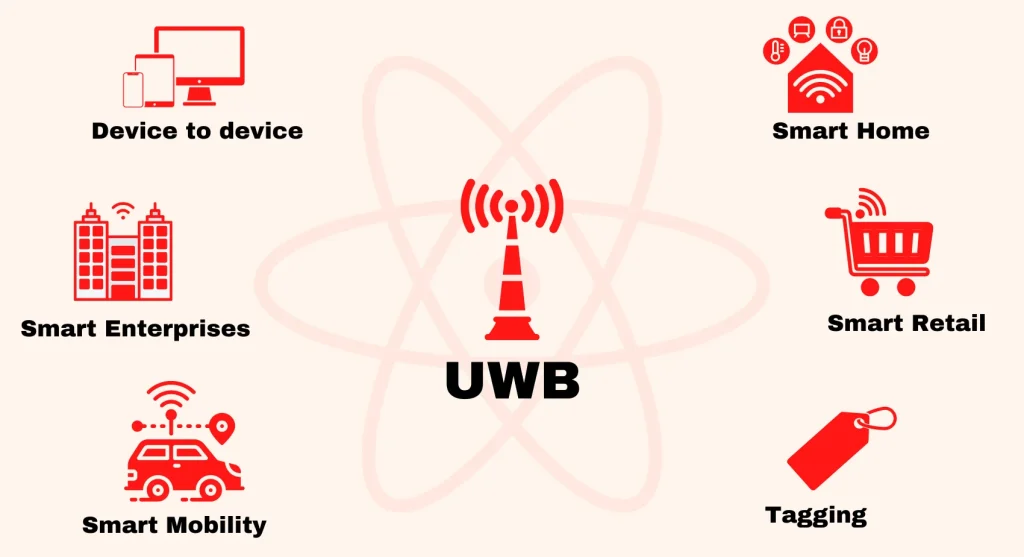Customer Login
Introduction to Ultra-Wideband
- Home
- Blog Details

- February 27 2024
- admin
Ultra-wideband is a radio technology that can provide high-bandwidth communications over short distances. It covers a huge area of the radio spectrum. Its traditional use is for non- cooperative radar imaging, but it is now used for various applications, including sensor data collection, tracking, and precise location.
While this technology has been around for a while, it only recently saw widespread use in consumer products. For example, UWB technology is used in smart cars to enable remote start and keyless entry. It also allows retailers to offer customers helpful information about products and services. UWB technology continues to develop; it will impact the IoT significantly.
What is ultra-wideband?
Ultra-wideband, or UWB, is a wireless protocol that transmits high-speed digital data between devices. It is like WiFi and Bluetooth and can send messages over long distances. However, this technology differs from the former because it uses a meager power, allowing it to carry signals through barriers, such as walls and trees.
Ultra-wideband signals are created by sending pulses of RF energy over a broad spectrum. The transmissions use wideband waveforms and can only be received by compatible devices. This prevents UWB signals from interfering with other radio signals. This is especially important for consumer devices, such as mobile phones. Earlier technology, such as carrier waves, could interfere with these signals. They can capture high-speed directional and spatial data. This technology is compatible with other wireless technologies and is also low-power. It also provides data in real-time. The range of the signals makes it a valuable tool for various applications.

How does ultra-wideband work?
Ultra-wideband uses radio waves and a broad spectrum to capture highly accurate directional and spatial data. Ultra-wideband is a technology that allows wireless devices to find each other. It works at high frequencies and is often superior to WiFi and Bluetooth Low Energy. Ultra- wideband technology uses a combination of transmitters and receivers in devices. The critical difference between UWB and WiFi is that they both use high frequencies to transmit data. WiFi, for example, uses a narrow band of frequencies, such as 20MHz, 40MHz, and 80MHz, while UWB uses a broad spectrum of frequencies.
Ultra Wideband is a powerful technology that can provide precise location data in a short time. It can even guide you to an object within your home using GPS and uses far less power than WiFi and Bluetooth. It is becoming increasingly popular as a wireless communication option for various applications, including mobile devices and smart home gadgets.
Getting started with ultra-wideband
Ultra-wideband (UWB) is a radio protocol that can determine your exact location with an accuracy unmatched by other wireless technologies. But how does Ultra-wideband compare to Bluetooth, WiFi, and RFID?
While Ultra-wideband is similar to Bluetooth, its technology is much more precise, reliable, and effective. It is already being used in many devices. In the coming years, ultra-wideband will reach many other technology areas, including smart homes. Here’s a quick primer on the new technology.
Ultra-wideband is a low-energy radio technology. It uses short pulses to send essential information across a broad range of frequencies. It doesn’t interfere with other radio signals, a significant benefit for mobile devices. In addition to being more secure, UWB can work with a broader range of devices, including smartphones and computers.
The benefits of UWB are apparent. It can be used in smart homes, for example, to activate home lights when you enter a room. It can also be used to start a car remotely. It’s more secure than NFC and can be used for secure wireless payments. It can also be used to provide helpful information about a product.
Benefits of ultra-wideband
Ultra-wideband is an emerging technology with many applications, advantages, and disadvantages. Some of the benefits of using ultra-wideband are:
- It can transmit data up to a hundred times faster than Bluetooth or WiFi and has a more extended range.
- In addition to providing high-speed data transfer, ultra-wideband communication systems can transmit signals up to 2Gbps, but with a low power spectral density (PSD). This means they can share the same spectrum with other radio services without incurring the cost of range licensing.
- The technology is capable of pinpointing your location using radio signals. It can even be used to locate lost items.
- It can track a child’s whereabouts, find rideshare drivers, and even power intelligent homes.
- It can also be used for secure wireless payments and intelligent retail. This is a more advanced version of NFC and WiFi.
- Another advantage of UWB technology is its ability to deliver relevant information. For instance, if a customer is looking for a particular product, UWB technology can send them a message about the product.
- It can also provide alerts about sales or promotions. In addition to consumer benefits, it can also improve business processes and enable companies to become more productive.
- The technology also allows transmitting information across large bandwidth bands without interfering with conventional narrowband or carrier waves.
- UWB technology can be used in smartphones and other mobile devices.
- It is being used in many countries to make efficient use of radio bandwidth, allowing for high-data-rate personal area network connectivity and low-data-rate applications.
UWB technology is gaining popularity among business representatives. It was initially used at military sites but has also found applications in healthcare, trade, logistics, and industry. As UWB technology gains more traction in the market, more organizations are starting to use the technology for real-world problems. It has transformed wireless technology and has the potential to revolutionize the smartphone industry and automotive industries. For example, it is used for tracking automobile theft using relay attacks.
Despite its many advantages, the future of ultra-wideband depends on its market adoption. The technology’s commercial success will depend on how quickly it can be adopted by the public and supported by third-party companies. It will need aggressive marketing to be a viable option. As a consumer product, UWB has the potential to provide greater precision than popular systems.
- adminhttps://www.pre-scient.com/us/author/webwideit/
- adminhttps://www.pre-scient.com/us/author/webwideit/
- adminhttps://www.pre-scient.com/us/author/webwideit/
- adminhttps://www.pre-scient.com/us/author/webwideit/
Tags
Ultra-Wide Band